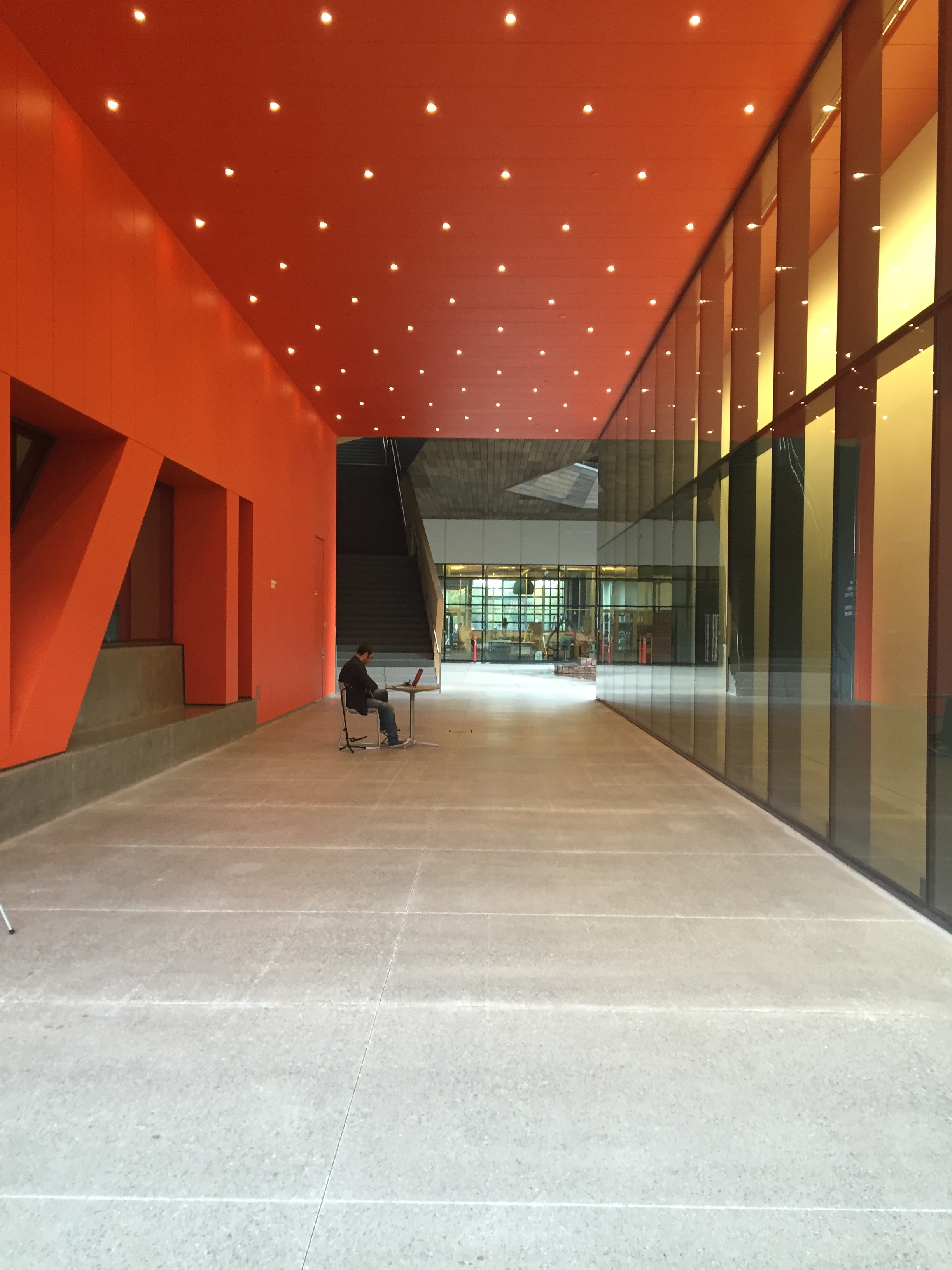49 Days For Space
7-week-long durational performance. In collaboration with Laura Steenberge. Electric guitar, transducers, software, hardware, computer. January-February 2016, Stanford, CA, USA. Image: Dave Kerr
Every day over the seven weeks of the exhibition artist Boris Oicherman and composer Laura Steenberge were present in space, composing and performing for space. The component parts of their musical instrument were the building, the glass vitrine made into a giant loudspeaker, Boris learning how to play the electric guitar, and Laura composing for Boris learning to play the guitar in the public space with the giant window as the loudspeaker. A number of procedural feedback loops formed and blurred the boundaries between the categories of composer/performer/listener/public/space, as each affected all the others. The acoustics and the esthetics of the place, Boris’ process of learning to play, the street noise, the behavior and the reactions of the passersby – all constrained the composing and guided the creative thinking. The composed music, in turn, affected the street noise, changed the behavior of the passersby, and guided Boris’ and Laura’s learning.
The story of “49 Days for Space” began with an accidental discovery of the peculiar acoustics of a long rectangular passage, and with the question: how does an artist transform an architectural side effect into organized structure. Organization of sound is a task of musical composition, thus the domain expanded beyond the sculptural, and a composer got involved. As the story evolved a metaphor was constructed: space as a musical instrument; and the task of the composer was to learn how to write music for this new instrument. The artist learning how to play was a part of that instrument. The conversations between collaborators shifted from “how to design a sound installation” to “how to design the process of learning”. The location turned into a public research laboratory where a composer and an artist learn together how to create music.
A site specific artwork is essentially a story of a place. As every place is unique, every story is unique. Creation of a site specific work is a continuous process of learning, unfolding existing stories of the place while at the same time constructing new ones. This is a sculptural process: the artist begins with the raw material – the site – and shapes it by removing the unnecessary and emphasizing the essential. In the case of this site and this piece, shaping involves composing music. The process of composing for the passage in the building ultimately became the process of transforming the stories into organized sounds, into the simultaneity of sounds, into the simultaneity of stories: into space.

